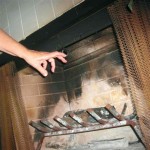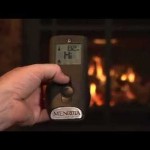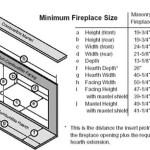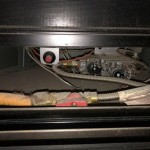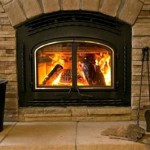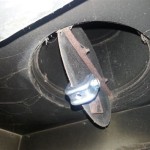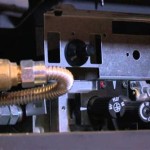Outdoor Fireplace Firebrick Mortar: A Guide to Choosing and Applying
An outdoor fireplace adds warmth, ambiance, and a gathering place to any backyard. To build a durable and efficient fireplace, choosing the right firebrick mortar is crucial. This mortar acts as the binding agent holding the firebricks together, ensuring the structure can withstand the high temperatures and stresses of a burning fire. Selecting the appropriate mortar is essential for the longevity and safety of your outdoor fireplace.
Understanding Firebrick Mortar
Firebrick mortar is a specialized type of mortar designed for high-temperature applications, specifically for masonry projects involving firebrick. It is formulated with refractory materials that can withstand extreme heat without cracking or degrading. Unlike standard mortar, firebrick mortar is typically composed of:
- Refractory Aggregates: These are materials like fire clay, silica sand, and alumina that can withstand high temperatures without melting or losing their structural integrity.
- Binder: This component, usually a type of cement, provides the adhesive properties that bind the mortar together.
- Water: Water is added to the dry mortar mix to create a workable consistency for application.
The specific composition of firebrick mortar can vary depending on the manufacturer and intended application. However, all firebrick mortars share the common characteristic of being able to withstand the intense heat of a fireplace without compromising structural integrity.
Key Features of Outdoor Fireplace Firebrick Mortar
When selecting firebrick mortar for your outdoor fireplace, several key features should be considered:
Refractory Properties
The most important feature of firebrick mortar is its heat resistance. It should be able to withstand the high temperatures generated by a burning fire without cracking, crumbling, or losing its bonding strength. The refractory properties of the mortar are typically measured by its heat resistance rating, which indicates the maximum temperature it can handle.
Bond Strength
Firebrick mortar must have sufficient bond strength to hold the firebricks together under the weight and stress of the fireplace structure. A strong bond ensures the fireplace remains stable and prevents the bricks from shifting or separating over time. The bond strength of the mortar is often measured in pounds per square inch (psi).
Workability
The workability of firebrick mortar refers to its ease of application. It should be easy to mix, spread, and shape without becoming too stiff or runny. A good workability allows for proper placement of the firebricks and a smooth, even finish.
Water Resistance
Outdoor fireplaces are exposed to the elements, including rain and moisture. Firebrick mortar should have a degree of water resistance to prevent it from absorbing water and deteriorating over time. This is especially important in areas with high rainfall or humidity.
Choosing the Right Firebrick Mortar
The best firebrick mortar for your outdoor fireplace will depend on several factors, including the size and type of fireplace, the intended use, and the local climate. Consult with a qualified masonry contractor or a firebrick manufacturer to determine the appropriate mortar for your specific needs.
Here are some general guidelines for selecting firebrick mortar:
- For small fireplaces: A standard firebrick mortar with a heat resistance rating of at least 2,000 degrees Fahrenheit is often sufficient.
- For large fireplaces or high-heat applications: Consider a high-temperature mortar with a heat resistance rating of 3,000 degrees Fahrenheit or higher.
- For fireplaces in areas with high humidity: Choose a water-resistant firebrick mortar to prevent moisture absorption and potential cracking.
Applying Firebrick Mortar
Applying firebrick mortar requires careful technique to ensure a strong and durable bond. Here are the general steps involved in applying firebrick mortar:
- Prepare the firebricks: Clean the firebricks thoroughly to remove any dust, debris, or contaminants that could affect the bond.
- Mix the mortar: Follow the manufacturer's instructions to mix the mortar with water, typically using a trowel or a mortar mixer. The consistency should be thick but workable, similar to peanut butter.
- Apply the mortar: Use a trowel to spread a thin layer of mortar on the back of the firebrick. The mortar layer should be even and consistent, with no gaps or voids.
- Place the firebricks: Carefully position the firebricks on top of the mortar layer, pressing them firmly in place. Ensure the bricks are aligned and level.
- Clean up: Remove any excess mortar or spills immediately to prevent staining or hardening.
It is essential to allow the mortar to cure properly before using the fireplace. The curing time will vary depending on the type of mortar and the ambient temperature. Consult the manufacturer's instructions for the recommended curing period.
Applying firebrick mortar correctly is essential for the longevity and safety of your outdoor fireplace. If you are not confident in your masonry skills, it is always best to consult with a professional contractor. They can ensure the correct mortar is chosen and applied, ensuring a durable and safe fireplace for years to come.

Firebrick Mortar Refractory 50lb Bag Material Warehouse

How To Install Firebrick In Your Outdoor Stone Fireplace

Stonetutorials Living Stone Masonry

How To Build A Diy Brick Fire Pit For Your Yard Family Handyman

How To Install Firebrick In Your Outdoor Stone Fireplace

Stonetutorials Living Stone Masonry

How To Install Firebrick In Your Outdoor Stone Fireplace

How To Buy The Best Outdoor Fireplace Direct Stoves

How To Build A Diy Brick Fire Pit For Your Yard Family Handyman

Firebrick Mortar Refractory 50lb Bag Material Warehouse

